Stainless Steel Compression Sprayer - Acid - 10 litre
6 BAR maximum pressure and FPM seals for acid, neutral and certain mild alkaline products.
Read More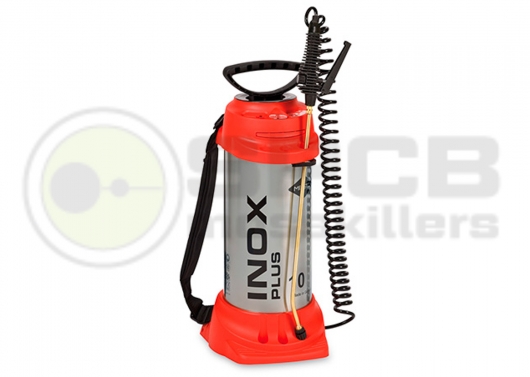

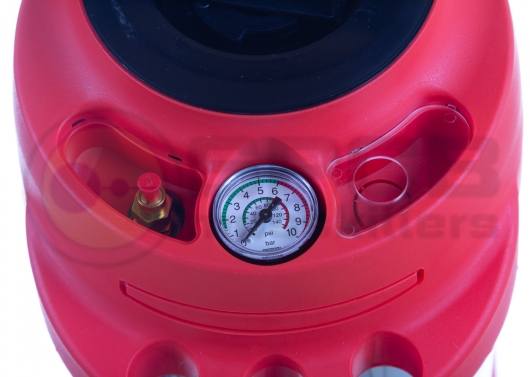
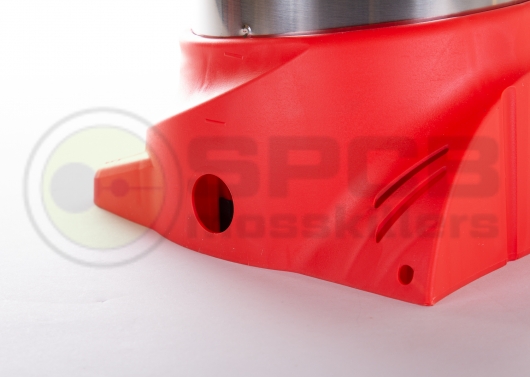

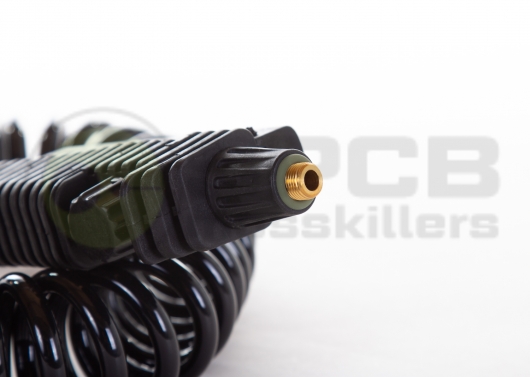
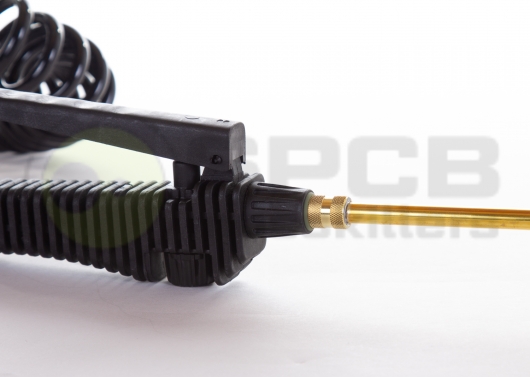








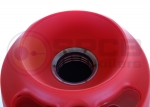


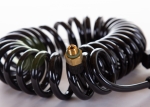









Our stainless steel Inox Plus sprayer boasts 6 bar maximum spraying pressure and a single piece tank that gives maximum strength together with a large base that allows for stability even on uneven ground.
The 2.5-metre recoil hose is great for keeping your spray area tidy however, should a longer hose be useful then we can offer an additional 5-metre or 10-metre length (not recoil design) complete with fittings.
This sprayer can be connected to a compressor which would give you a constant supply of air. To do this we can offer three different types of connector; there is the single valve that threads directly into the tank, a replacement handle for the compression cylinder that incorporates the valve and the third option is another replacement handle which not only incorporates the valve but also an adjustable pressure gauge.
- Option 1 - Narrow Valve or Wide Valve
- Option 2 - Narrow Valve or Wide Valve
- Option 3 - Narrow Valve or Wide Valve
- Tank capacity - 13-litres
- Tank working capacity - 10-litres
- Tank Ullage - 3-litres
- Working pressure - 6 bar
- Unit weight - 4.7 kg
- Tank construction - stainless steel
- Carried by a shoulder strap
- pH range - 5-9
- Nozzle supplied - brass flat jet with filter (we offer a full range of nozzles and inserts)
- Lance - brass 500mm
- Hose - 2.5-metres recoil design
- Pump - 38mm brass
- Compressor Compatible with accessories (see product description)
- FPM Seals which is a synthetic rubber with high elasticity and high resistance to oils, strong acids, hydrocarbons and chlorinated solvents. It also has a high temperature resistance.
Our Mesto sprayers are packaged, as usual, in brightly coloured boxes with plenty of good quality, informative photos and basic information and is of a construction that felt strong enough to both hold and give some decent protection to the contents. I like the way that the box lid is cut so that it can form a handle. A nice touch.
Upon opening the box, I look for the instruction manual and with these sprayers we get not one but two. The first is more of a leaflet which opens out and gives technical information on metering and spraying rates. It looks very technical but is very informative and a reminder that these sprayers are intended to be used, not just by amateurs but, but professionals. The main instruction manual is printed in six languages so the 47 pages are not of interest to many of us but the 7 that are printed in English tells you everything that you need to know from a welcome message and safety notices through technical information, assembly instructions, care & maintenance information and a faults guide.
Having had a quick read, I decided it was time to have a look at the sprayers themselves. Everything was nicely packed around the tank so to remove the sprayer from the box only required the hose to be put to one side, a gently pull on the tank handle and the sprayer lifted easily from the box. My first impression is that stainless steel makes for a really, very impressive looking tank. I like the brass lance and nozzle and the coiled 2.5-meter hose. The coiled hose reduces the hose length to around 30cm so this is a nice space saving idea which also means that you are not going to get caught up in a long hose. The sprayer itself has three storage holes for lances, a nice big tank handle, pressure release valve, pressure gauge and small storage compartment. These last three are all recessed into the top of the sprayer which kept nice sight lines. This is not important when it comes to the operation of the sprayer but, I feel, it does show that time has been taken to design a sprayer that isn’t just effective but also looks good.
After skimming through the instruction manual, the assembly didn’t look very difficult. There are only three parts to attach to the tank; the shoulder strap, coiled hose and lance. The hose and lance handle are already connected to each other so one less job to do. The padded shoulder strap is fed through the two slots in the rear of the sprayer and whilst a little fiddley, it only took me a few moments to fit. The lance is easily threaded onto the lance handle and the hose screws into the base of tank. TIP: There is a small lock that, when pushed into place, stops the hose from accidentally unscrewing. I would suggest that it is a good idea to use it.
The assembly only took a few minutes and wasn’t difficult. Remember that there are plenty of diagrams and instructions to help you so if something doesn’t make sense then go back to the instruction manual.
I was now ready to start spraying so I placed the tank on the floor and turned the tank handle anticlockwise and after a few turns pulled the central housing from the tank which allowed me to start filling. The design incorporates a nice wide filling area so spillages should be easy to keep to a minimum. I had no issues filling the tank so replaced the housing and gently tightened it. I only needed to pump the tank handle a few times to bring it to full pressure and spraying was just as I would expect; a nice spray pattern was easily maintained. To release the pressure within the tank simply pull the small, red pressure release valve.
Draining of the tank was easy as the hose it attached at the base so, if you wish, you can simply unscrew the hose and the tank will fully drain. Or you can just remove the central housing and empty any contents that way.
TIP: The brass thread, on the lance handle, that the sprayer lance attaches to can be unscrewed which will reveal a larger thread. This larger thread is required should you wish to use telescopic lance extensions or many other types of attachment.
I would class this as top quality, compression sprayer that is designed to be used by both amateurs and professionals alike. The 6 BAR maximum working pressure and the option to pressurise via compressed air (with the addition of a valve) mark these sprayers apart from much of the competition. Metal tanks are very robust and look great.
Why is the tank size different from the working capacity?
With compression sprayers you must have room, within the tank, to pressurise air which will then push the liquid out of the tank. This is why there is a difference and this difference is called ullage. This sprayer has a 13-litre tank capacity and a recommended maximum fill of 10-litres which gives an ullage of 3-litres. The more pressurised air that there is within the tank then the longer spray time between stopping and re-pressurising the tank. Be careful when buying sprayers as you need to know the fill volume/capacity not the tank size.
Why should I use a Stainless Steel sprayer?
They are strong, look very good, robust and give very good chemical resistance when used in conjunction with the FPM seals.
You say that this sprayer can be used at 6 BAR, how do I know when it is at pressure?
Our Inox Plus sprayers have a pressure gauge fitted which will show you the air pressure within the tank. This is very helpful as sometimes you will just want the most pressure possible especially if you are trying to spray a very thick liquid but some products will recommend a spraying pressure for optimum performance. With the gauge you can see exactly the pressure that you are spraying.







